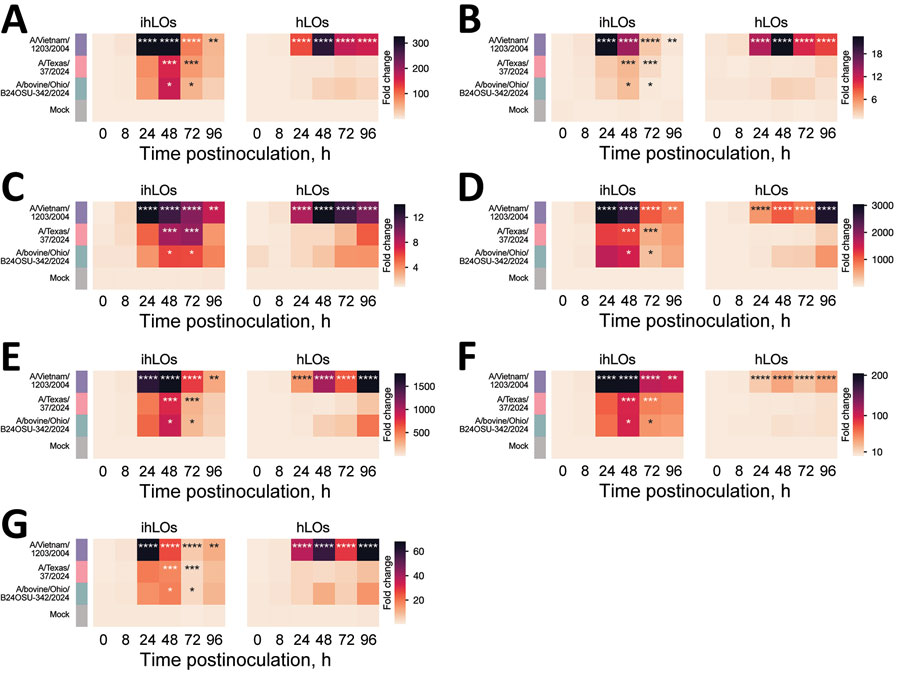Volume 31, Number 2—February 2025
Dispatch
Comparison of Contemporary and Historic Highly Pathogenic Avian Influenza A(H5N1) Virus Replication in Human Lung Organoids
Figure 2

Figure 2. Induction of ISGs in a comparison of contemporary and historic highly pathogenic avian influenza A(H5N1) virus replication in human lung organoids. A) ISG15; B) ISG20; C) interferon-induced transmembrane 3; D) interferon-induced protein with tetratricopeptide 1; E) myxovirus resistance 1; F) 2′-5′-oligoadenylate synthetase 1; G) retinoic acid–inducible 1. We infected ihLO and hLO as described in [[ANCHOR###F1###Figure 1###Anchor]]. We extracted RNA from 2.5 × 104 cells by using the QIAGEN RNeasy kit (QIAGEN, https://www.qiagen.com) following the tissue extraction instructions. We ran quantitative reverse transcription PCR by using primers (Integrated DNA Technologies, https://www.idtdna.com) to detect ISGs. Data were normalized to an internal control (ACTB), and fold change was calculated relative to timepoint-matched mock-infected controls. Mean fold change is reported for 6 ihLO and 3 hLO biologic replicates. Statistical analysis was performed using 2-way analysis of variance followed by Dunnett posttest; p values <0.05 for comparisons of infected versus mock samples are indicated. hLOs, adult stem cell–derived human lung organoids; HPAI, highly pathogenic avian influenza; ihLO, iPSC-derived human lung organoids; iPSCs, induced pluripotent stem cells; ISGs, interferon stimulated genes; LDH, lactate dehydrogenase.
1These authors contributed equally to this article.